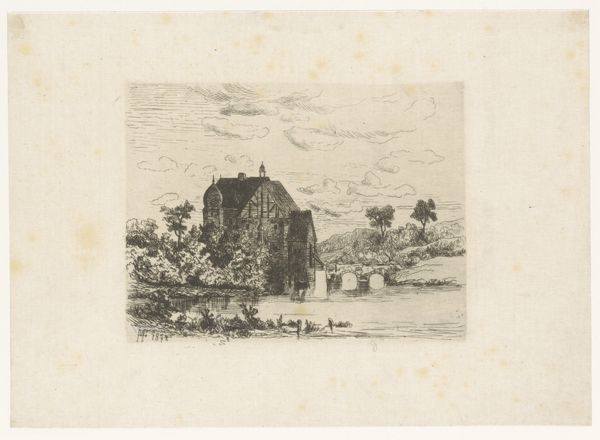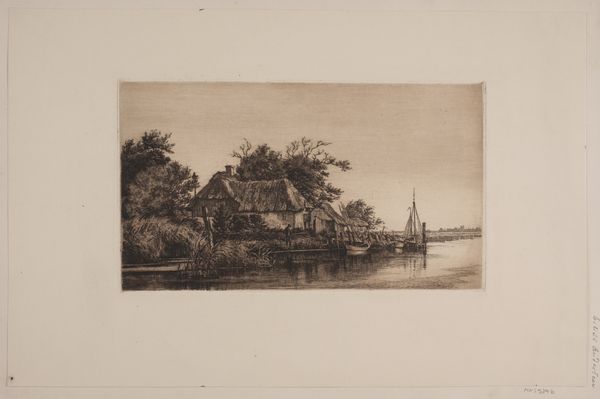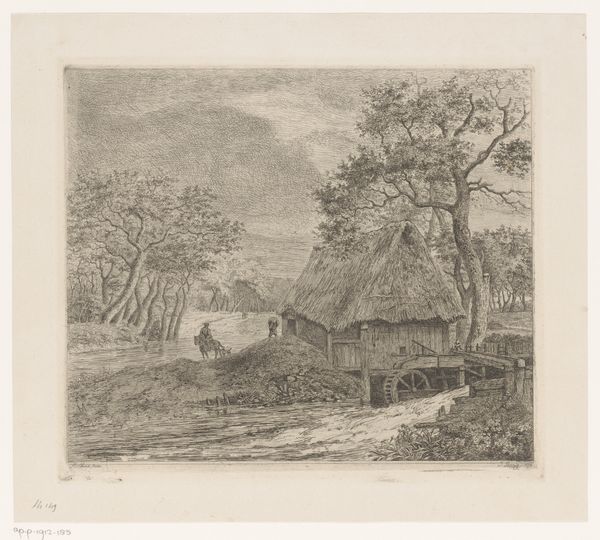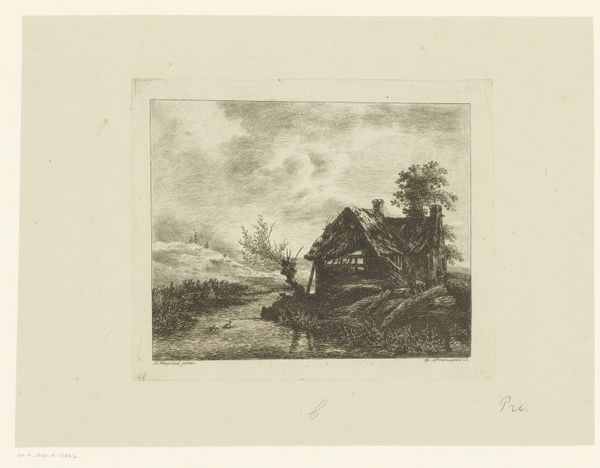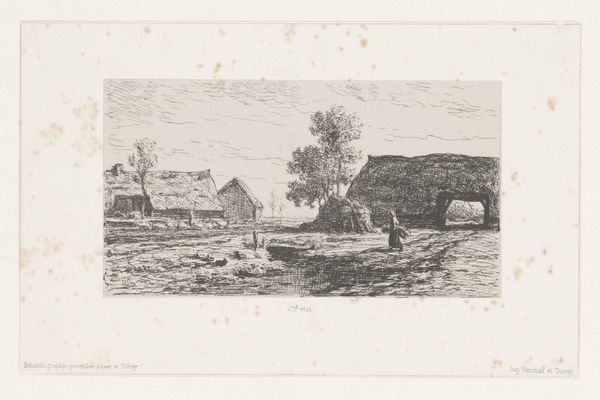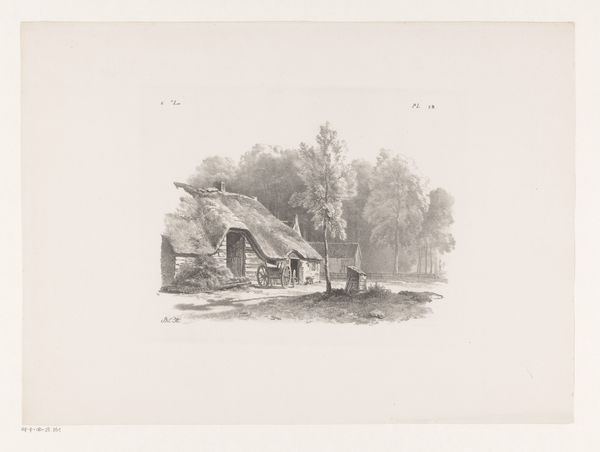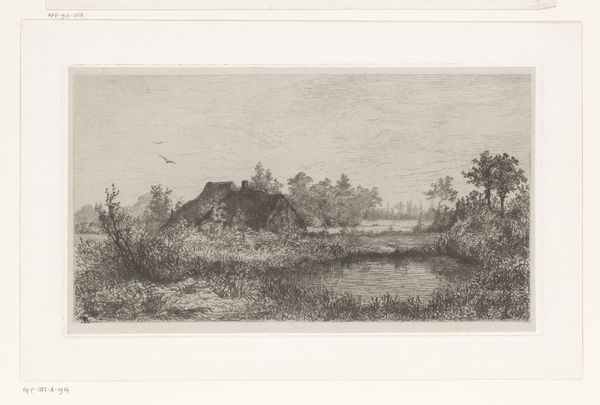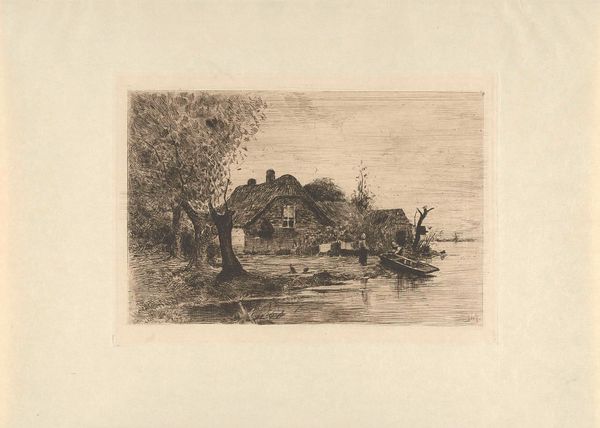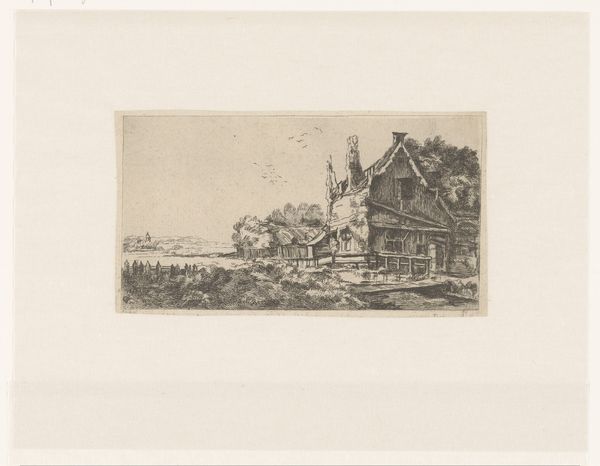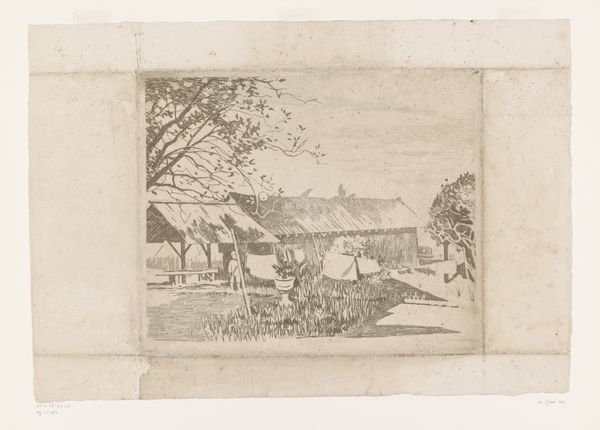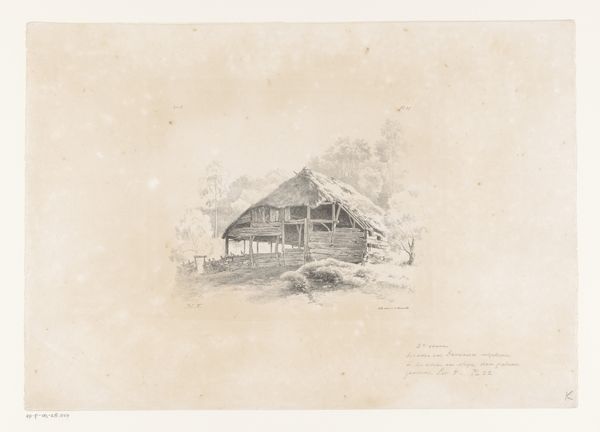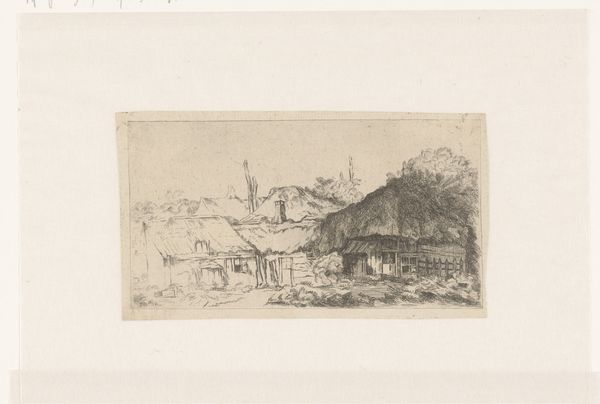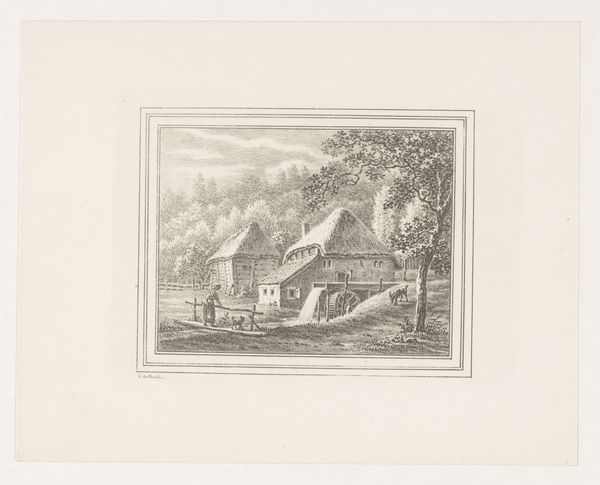
drawing, print, etching, paper
#
pencil drawn
#
drawing
#
light pencil work
# print
#
etching
#
pencil sketch
#
landscape
#
paper
#
genre-painting
#
realism
Dimensions: height 355 mm, width 440 mm
Copyright: Rijks Museum: Open Domain
Curator: Welcome! Today we'll be looking at "Watermolen en visser," or "Watermill and Fisherman," a print dating from between 1867 and 1874, currently held at the Rijksmuseum. Jan Mesker is the artist responsible for this landscape. Editor: My initial reaction is one of quiet observation. The scene is subdued, a seemingly everyday moment rendered with a delicate touch. There's a melancholic, almost contemplative air about it. Curator: I see that. What strikes me is how Mesker, working in etching and using a light pencil style, brings out the details. Look at how the water interacts with the mill, how that relates to the man standing nearby. His relation to the water suggests something about the local economy and society, where humans are reliant on the environment around them. The materiality of this rural scene takes centre stage. Editor: The watermill, of course, is a prominent symbol. Traditionally, mills represent industry and progress but also cyclical life. Its presence here reminds me of the enduring power of simple technology and local resources. The fisherman is likewise part of this pattern of images as it hints at self-sufficiency. What do you think of the cloud representation? Curator: Interesting that you picked up on the image of the clouds! I feel those smudges also subtly showcase the artist's mastery of printing techniques and materials. And I appreciate that even the artist's realism doesn't attempt to beautify the industrial presence; it integrates industry into the cycle you described. Editor: I appreciate your points, especially concerning technique! And considering all the imagery together, maybe the overarching symbolic intent of this drawing is simply to give space and consideration to all these rural, genre scenes and simple lifestyles during that era. Curator: The etching style, combined with the realistic theme, allows Mesker to bring dignity to everyday labors. It avoids glorification or any grand gesture. By documenting the integration of man-made technology and society, we are confronted with these historical modes of survival. Editor: Right. Looking at it all again now, there is that inherent visual tension—simplicity elevated by careful and detailed symbolic composition, urging us to contemplate daily life through the careful dance of realistic imagery. Curator: And considering it is still displayed at the Rijksmuseum today, it serves to continue a social memory of a time not that long ago. Editor: I agree. And personally, thinking about what you brought up today regarding his artistic method has me appreciating Mesker's piece more for what his hands alone were able to accomplish!
Comments
No comments
Be the first to comment and join the conversation on the ultimate creative platform.
